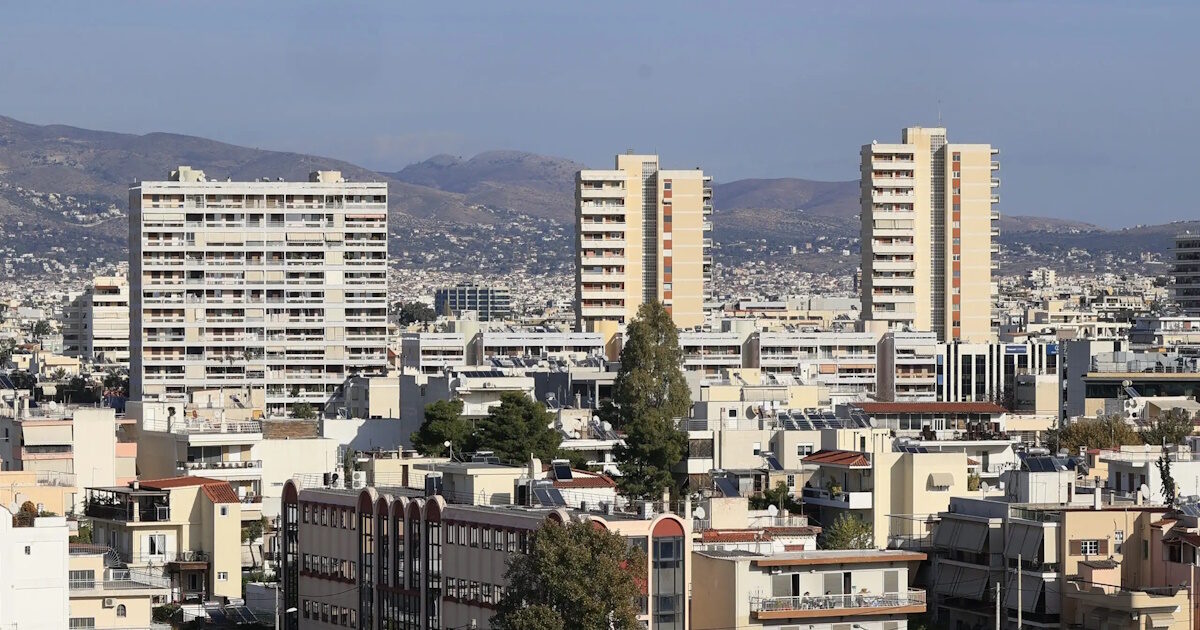A total of 127,000 properties are currently available for sale according to Prosperty’s new survey, which highlights a map of great inequalities in its distribution supply In the basic markets real estate of Greece.
With 22,294 properties, the center of Athens holds the lead in availability, garnering 18% of the total offer. This image reflects the intense urbanization as well as the opportunities created by the renovations, the development of the tourism sector and the short -term leases.
Even higher is the rest of Greece, which records 26,751 available properties (21%), proving that the region does not stay outside the investment radar. Whether it is holiday real estate or new projects in developing areas, the Greek region seems to be back dynamically.
Thessaloniki and the suburbs of Athens
Thessaloniki occupies third place, with 16,425 real estate (13%), and the presence of the southern suburbs of Athens (18,802 properties – 15%) is also significant. Following are the western suburbs (9,233 properties – 7.3%) and the northern suburbs (7,514 – 6%), which maintain a steady market presence.
The suburbs of Thessaloniki also have a remarkable activity, with 12,538 properties (10%), indicating a decentralization of demand, especially for family or larger properties.
Crete and Cyclades
On the contrary, areas of high tourist value such as Crete and the Cyclades are limited. In Crete, there are only 1,335 properties (1%) and 3,200 (2.5%) in the Cyclades, which may be due to either low availability or high prices that are deterrent to wider demand.
Piraeus and Achaia
Piraeus with 4,526 properties (3.5%) and Achaia with 4,382 (3.4%) appear as areas with potential investment dynamics, especially after the infrastructure that gradually upgrades their connection to metropolitan centers.
Of particular interest is the date of construction of the 127,000 properties today for sale. According to the data, the largest percentage of – 22.3% – relates to properties built in the 1970s, followed by the newly built, namely those built after 2020, which accounts for 21.78% of the total. Then come the properties built in the 2000-2009 decade, with 13.47%, and those in the 1960s, with 12.47%.
“About 45% of the real estate in the market is construction buildings before 1990,” said Prosperty’s chief executive Antonis Markopoulos, sketching the strong “aged” footprint of today’s stock.
Further, only 1 in 10 properties available are renovated – about 10,500 properties – while the vast majority, ie 89,500 properties, remain unnecessary. “The problem in the real estate market today is not that there is no offer. It is that it does not “bother” with demand, “Mr Markopoulos said, pointing out the difference between the existing stock and the needs of prospective buyers.
What do buyers ask for
As for the financial planning of interested parties, the average budget ranges mainly between 100,000 and 200,000 euros, a charge of 44.53% of prospective buyers. Following are those available below 100,000 euros (26.13%) and those looking for a property in the category of 200,000 to 300,000 euros, with 15.43%.
The overall landscape sketches a market that, while having a quantity, does not appear to respond qualitatively or age to buyers’ requirements, confirming the need for better supply and demand.
